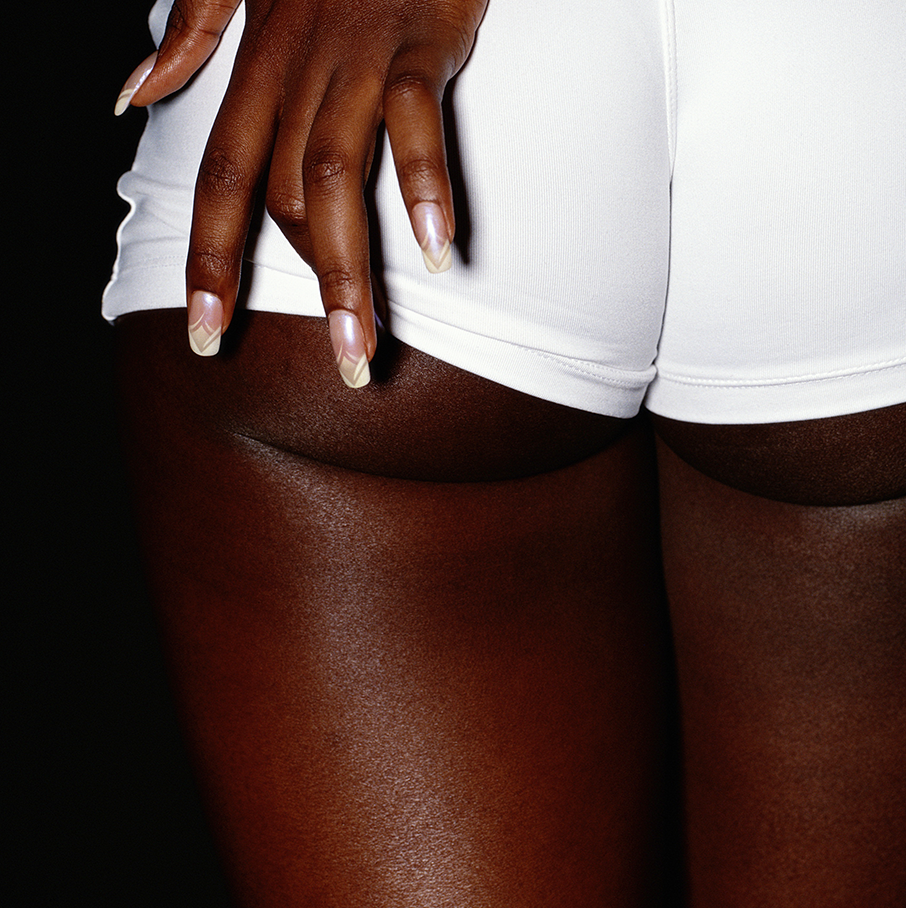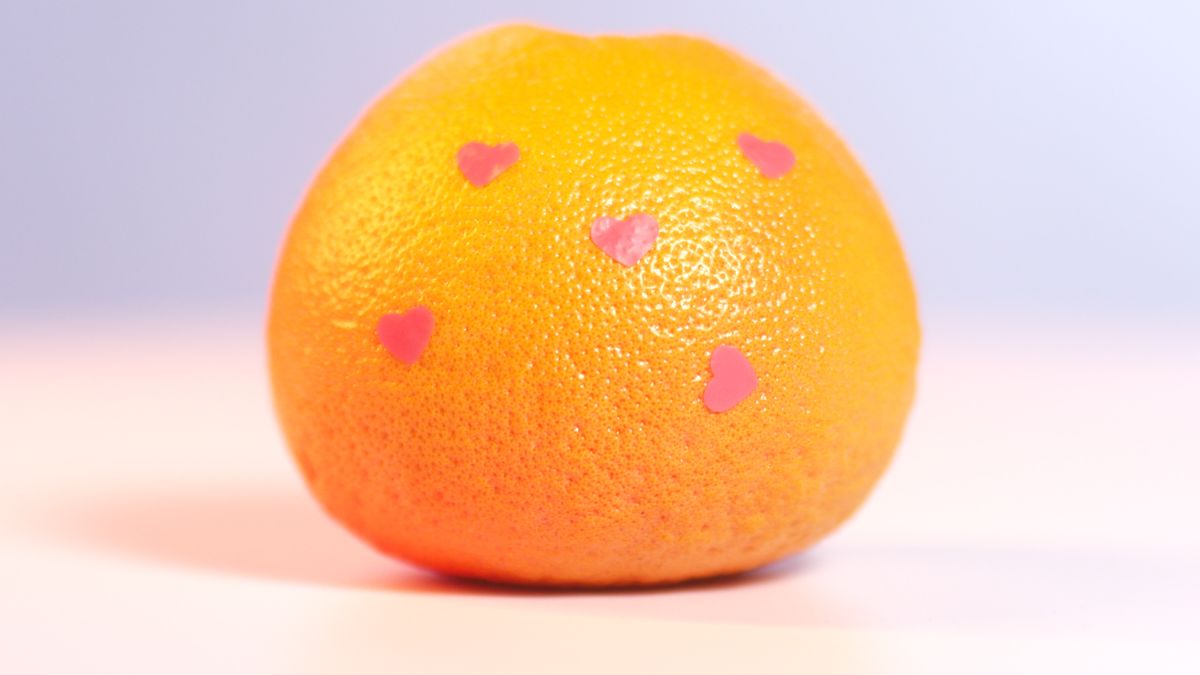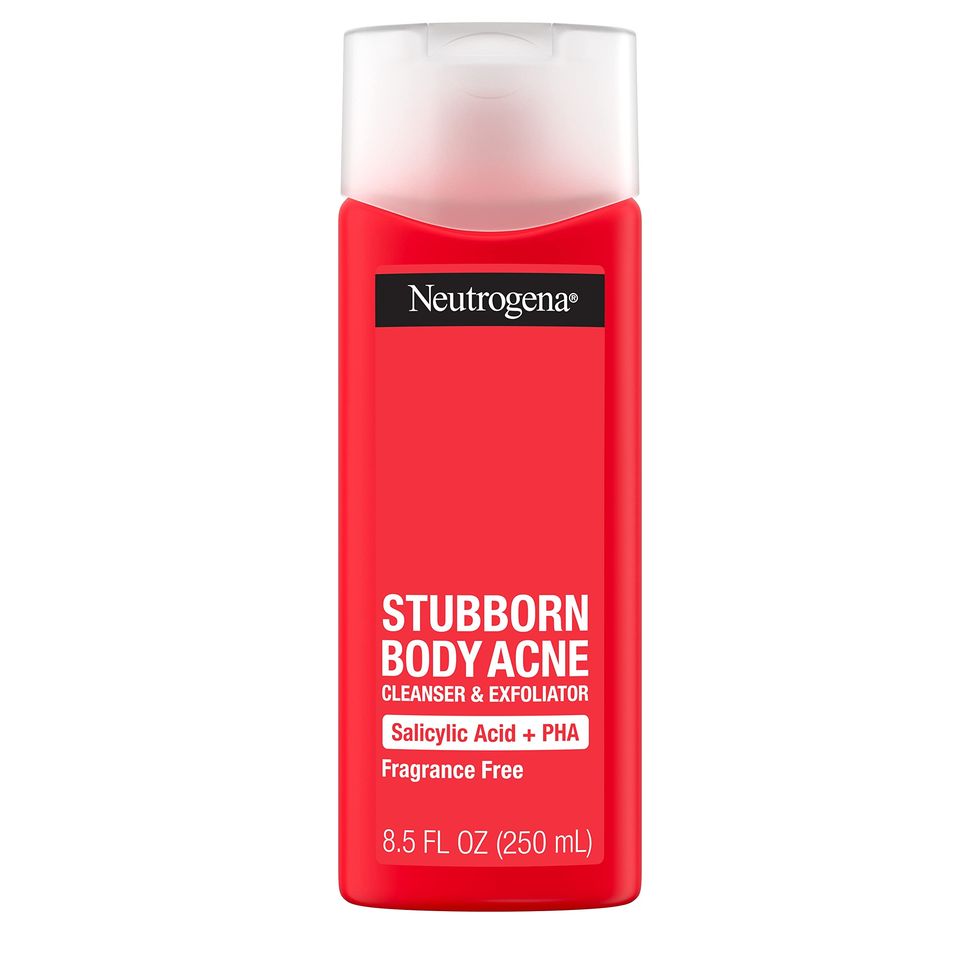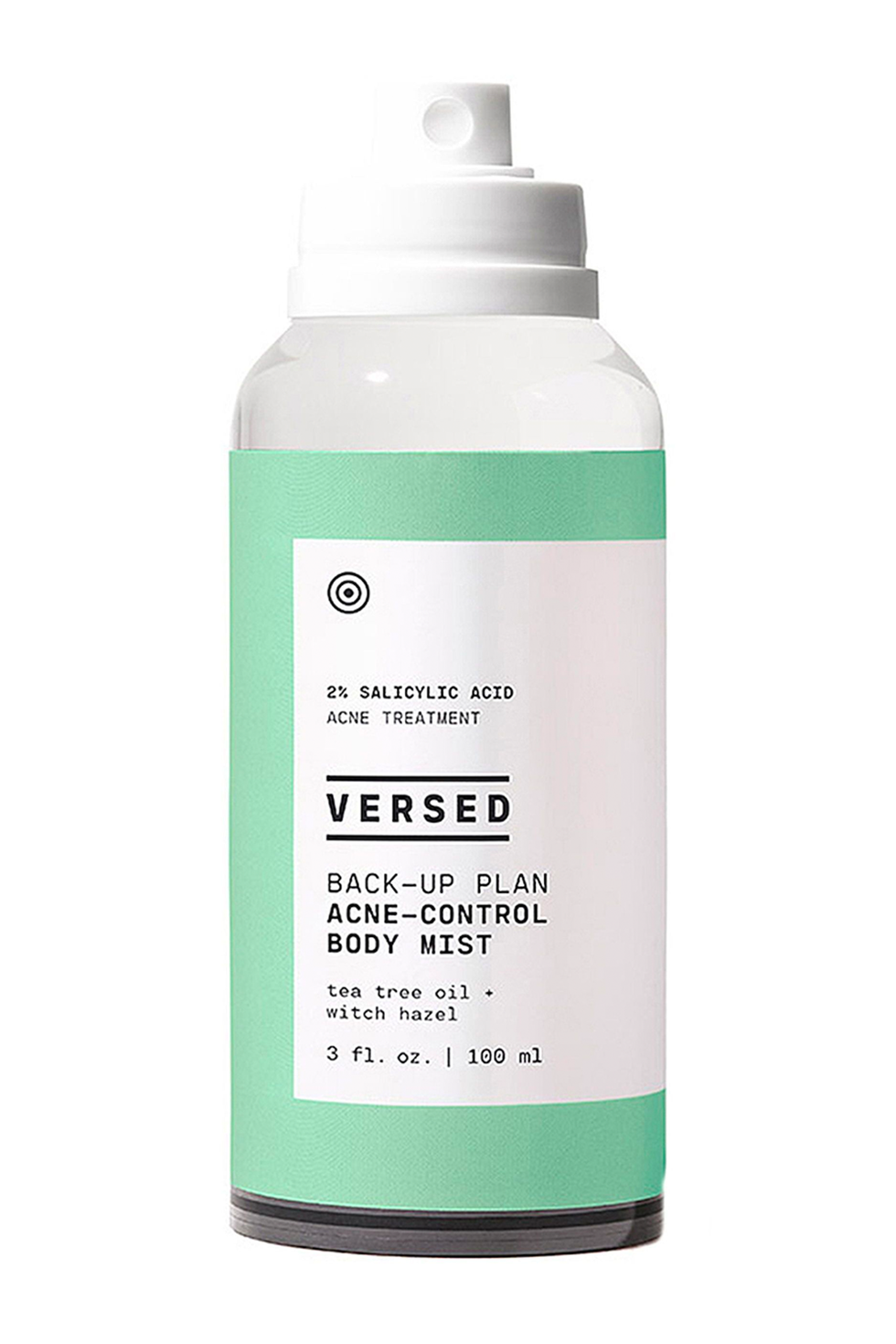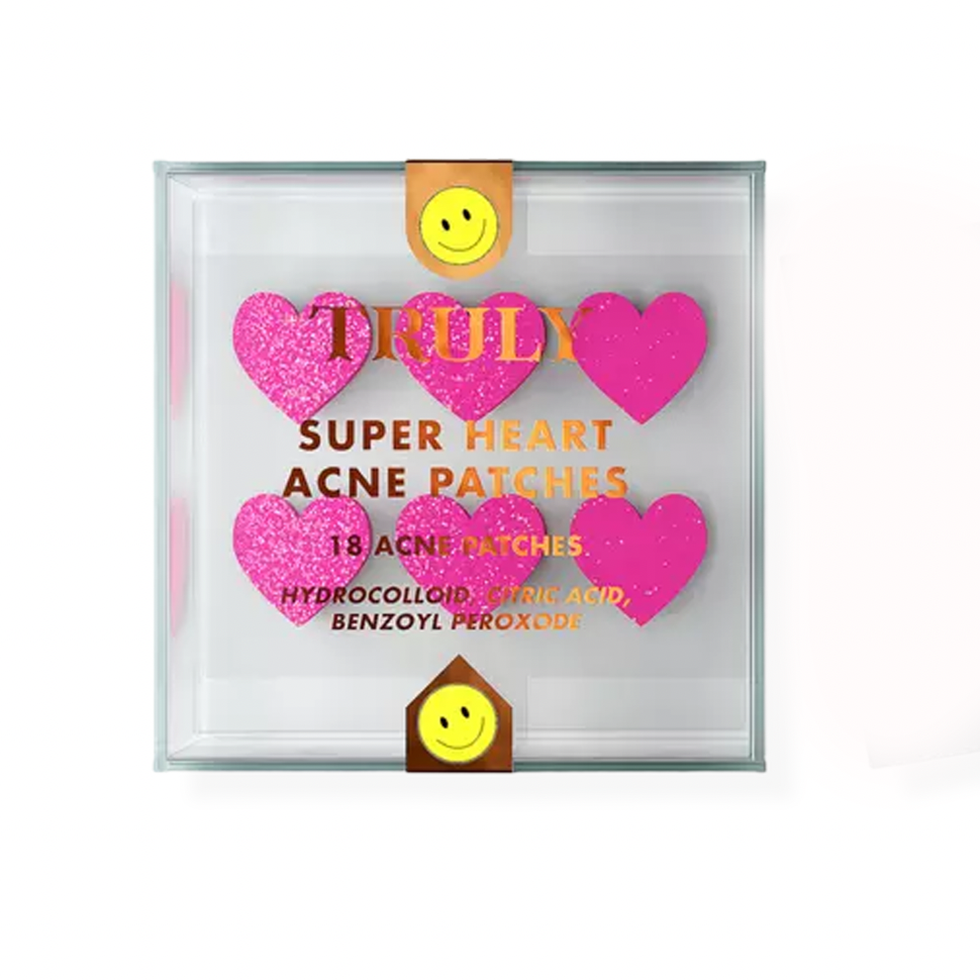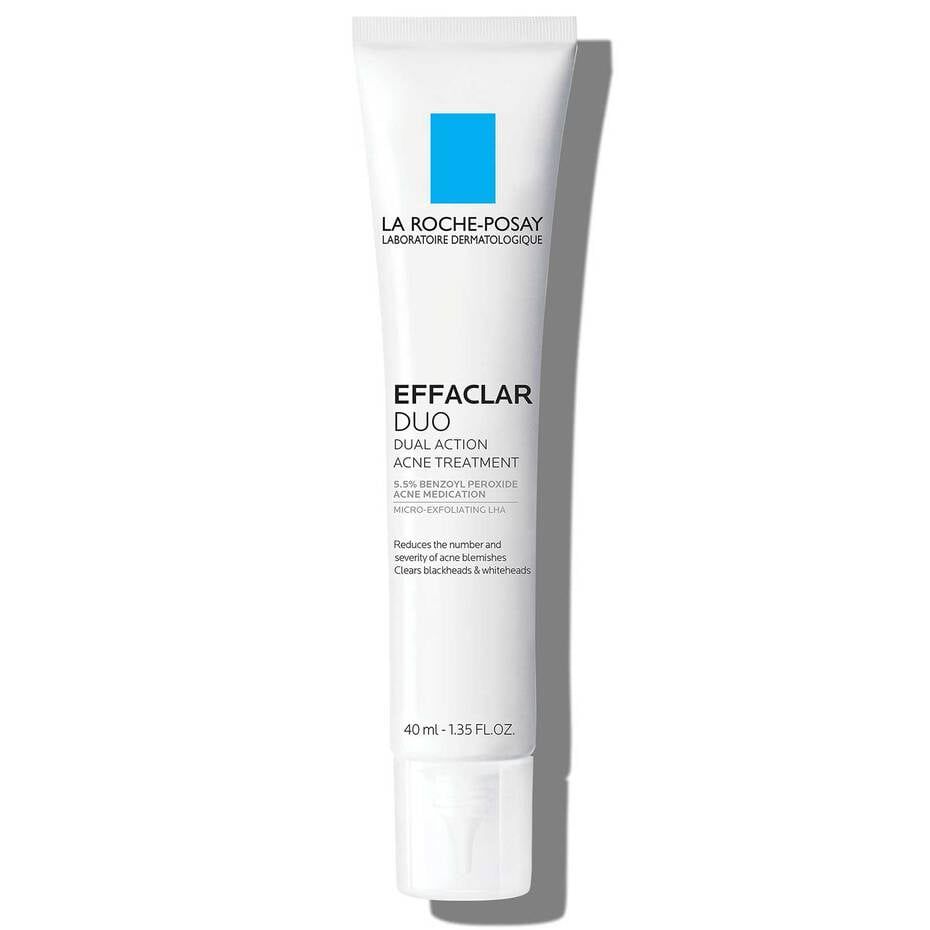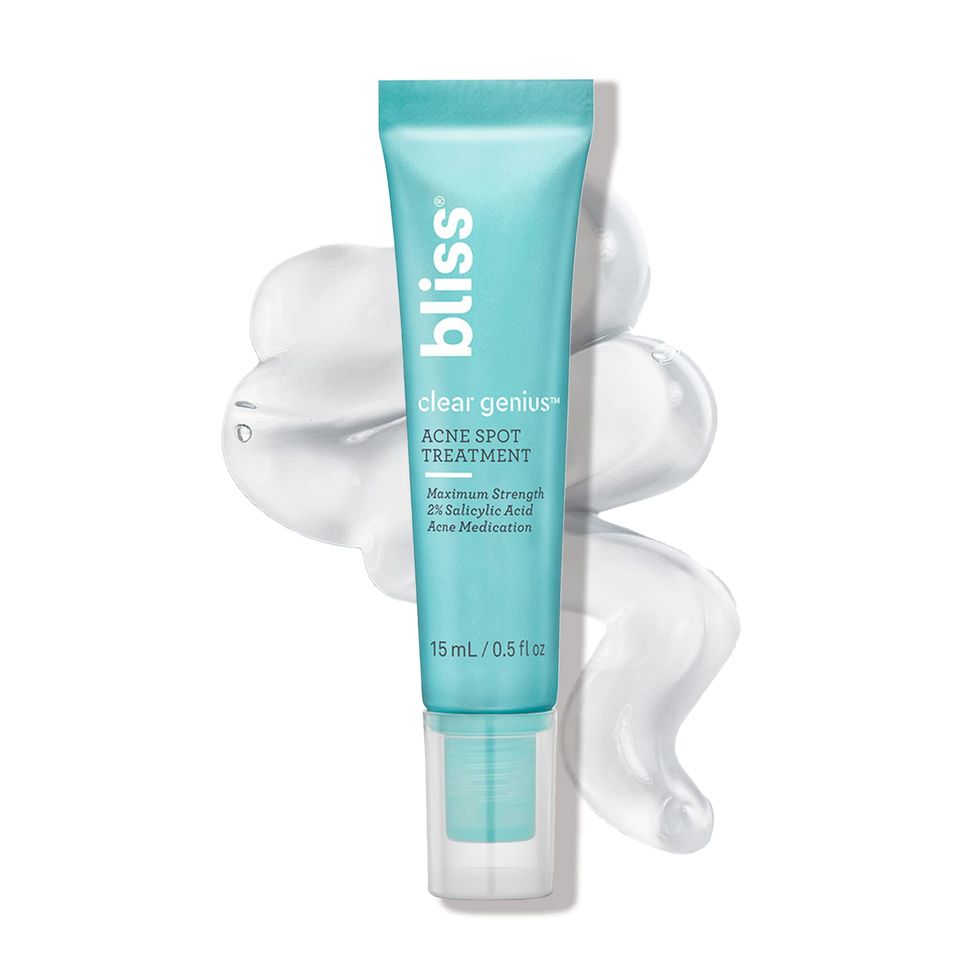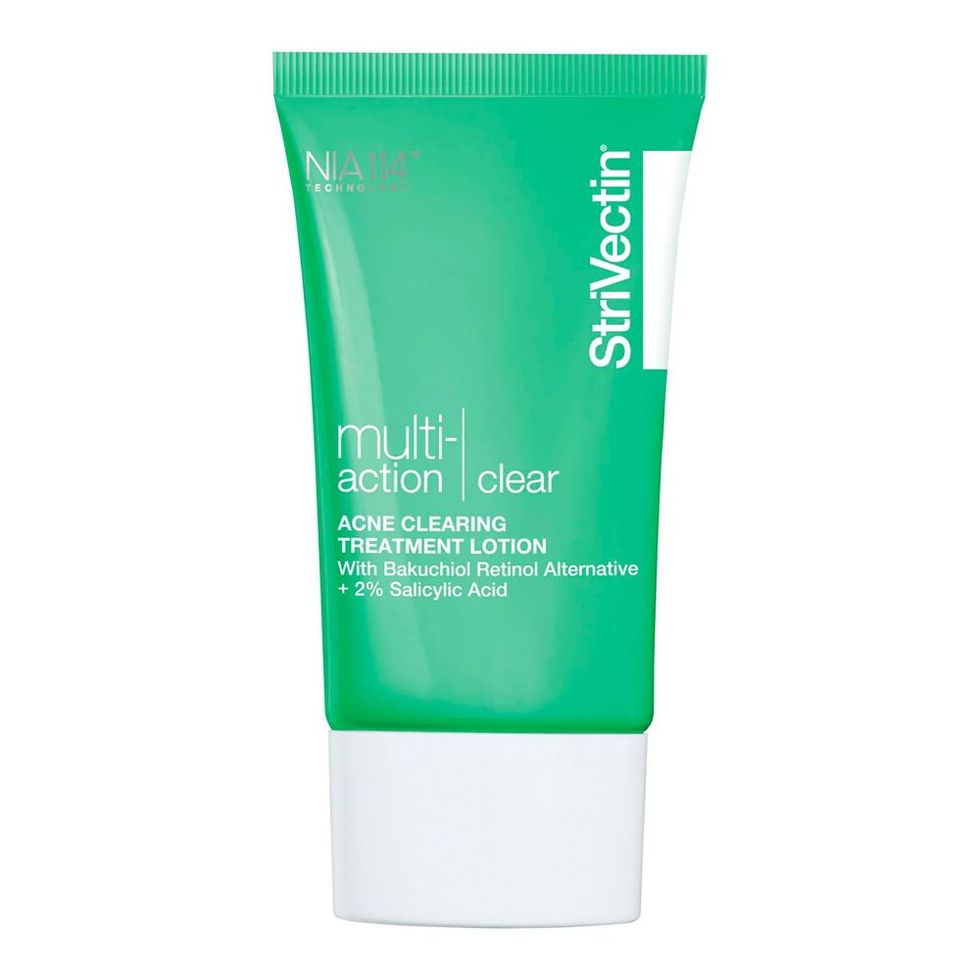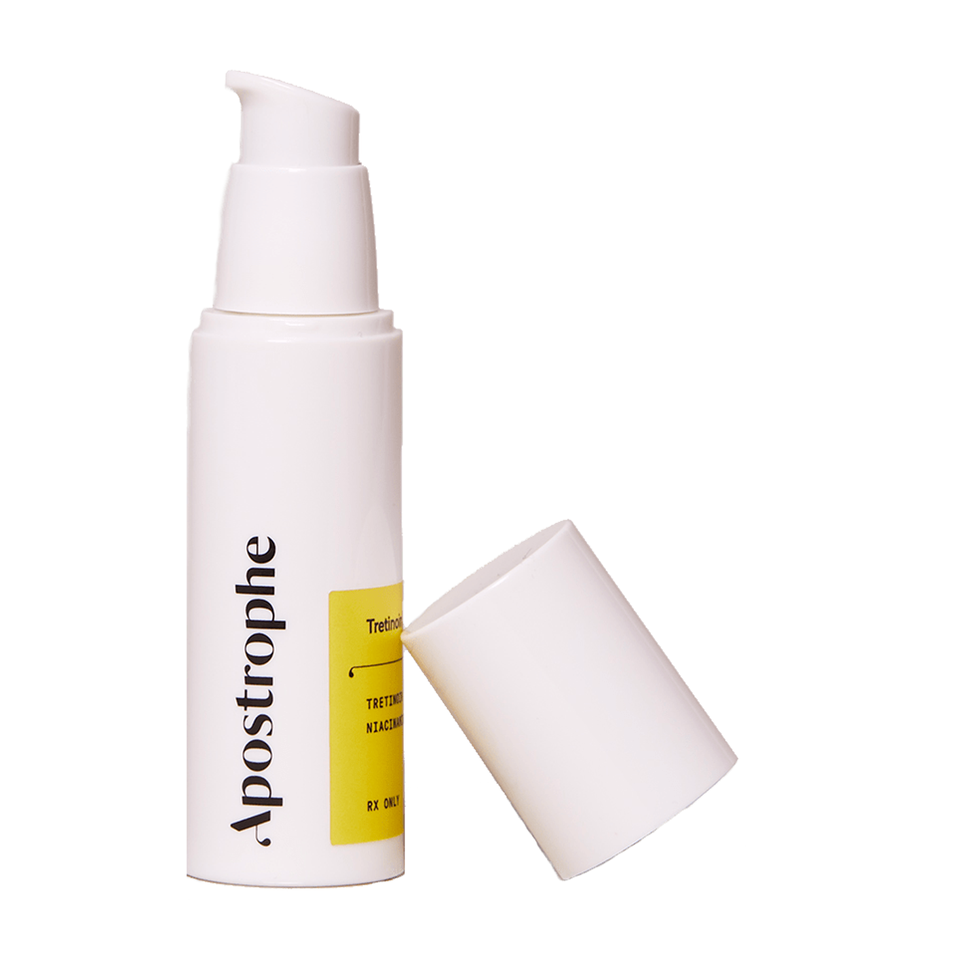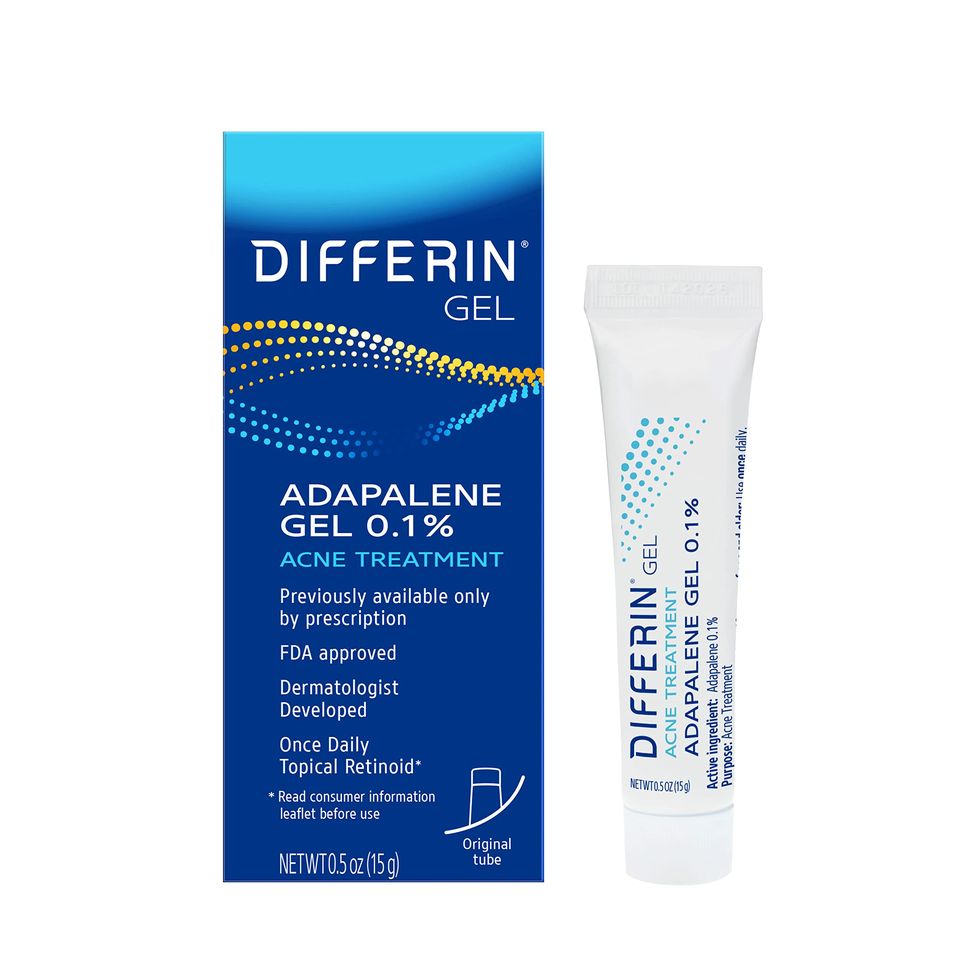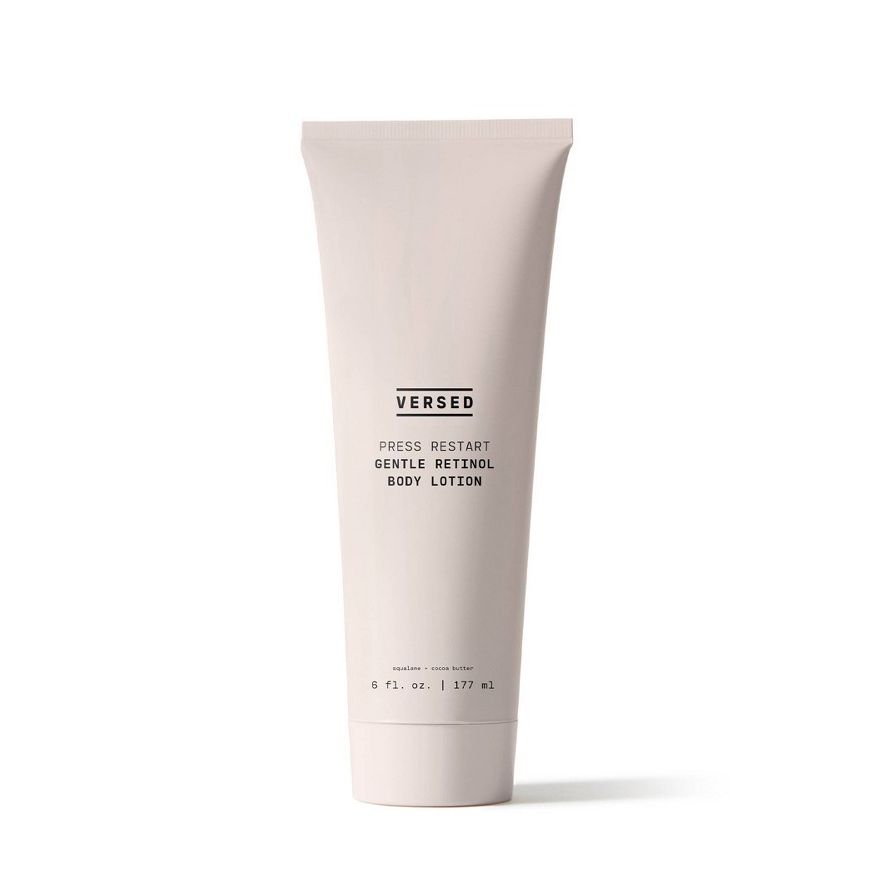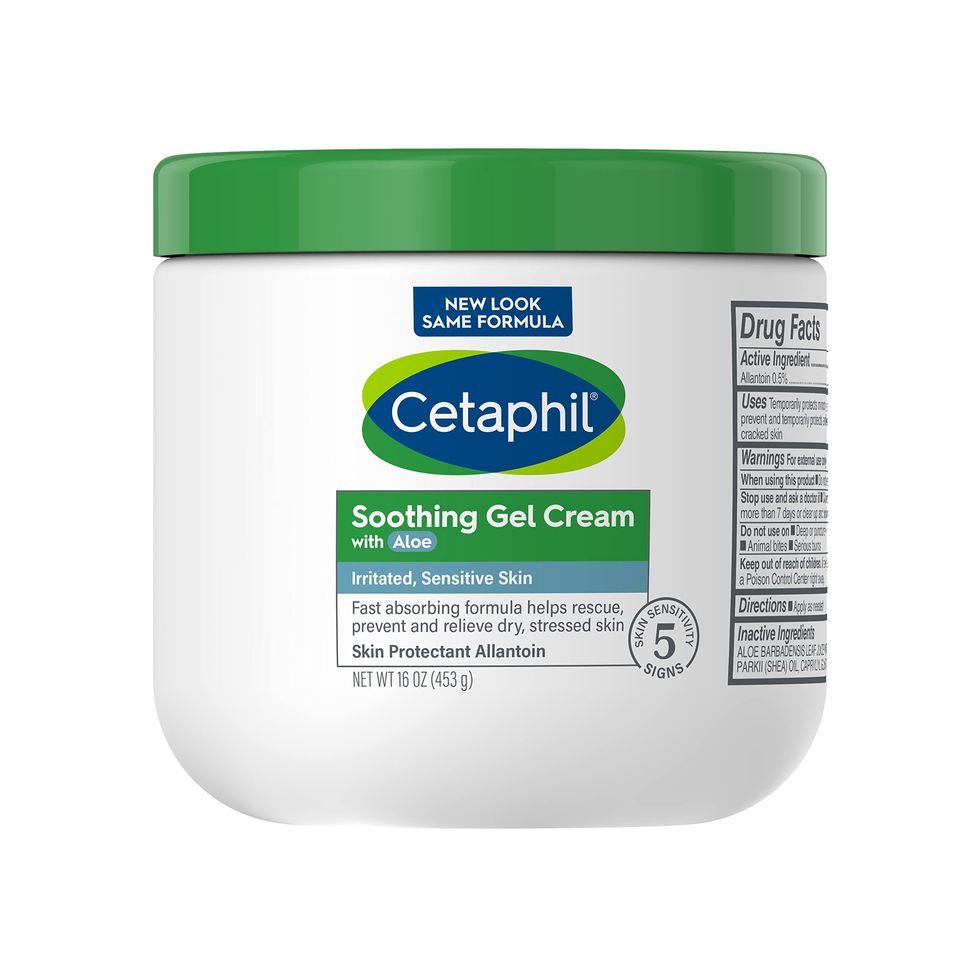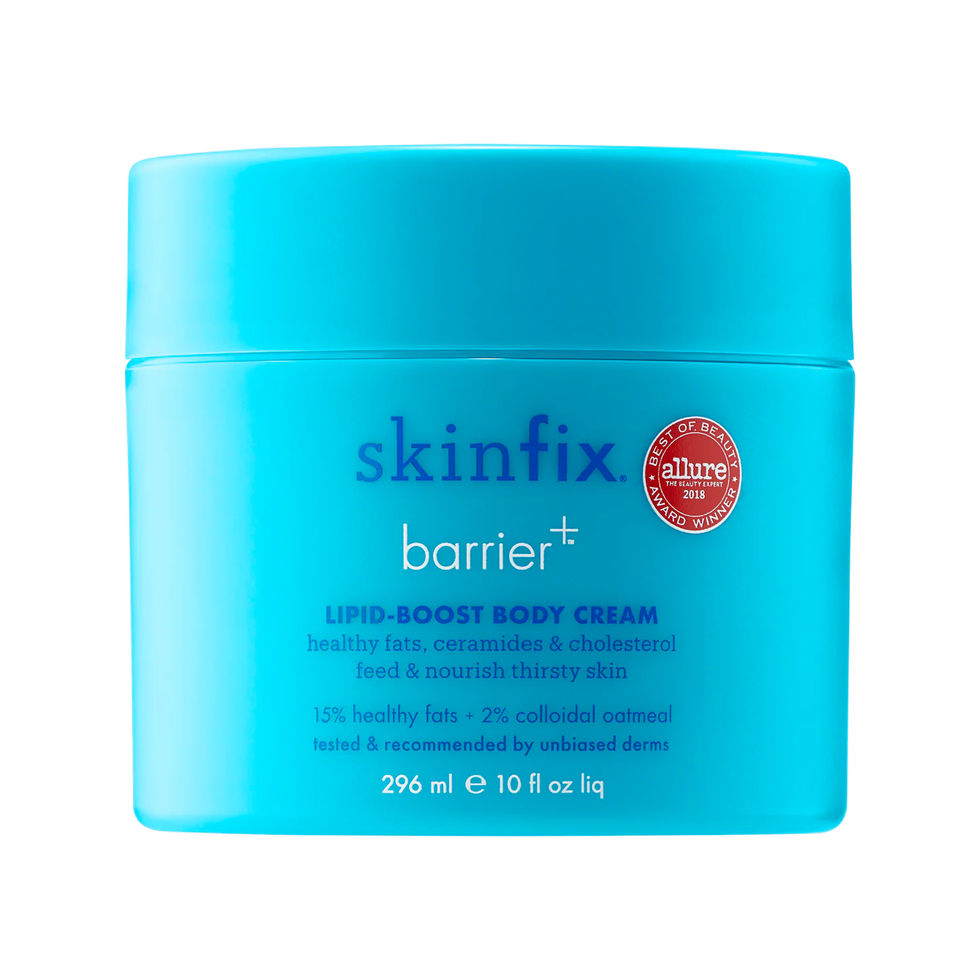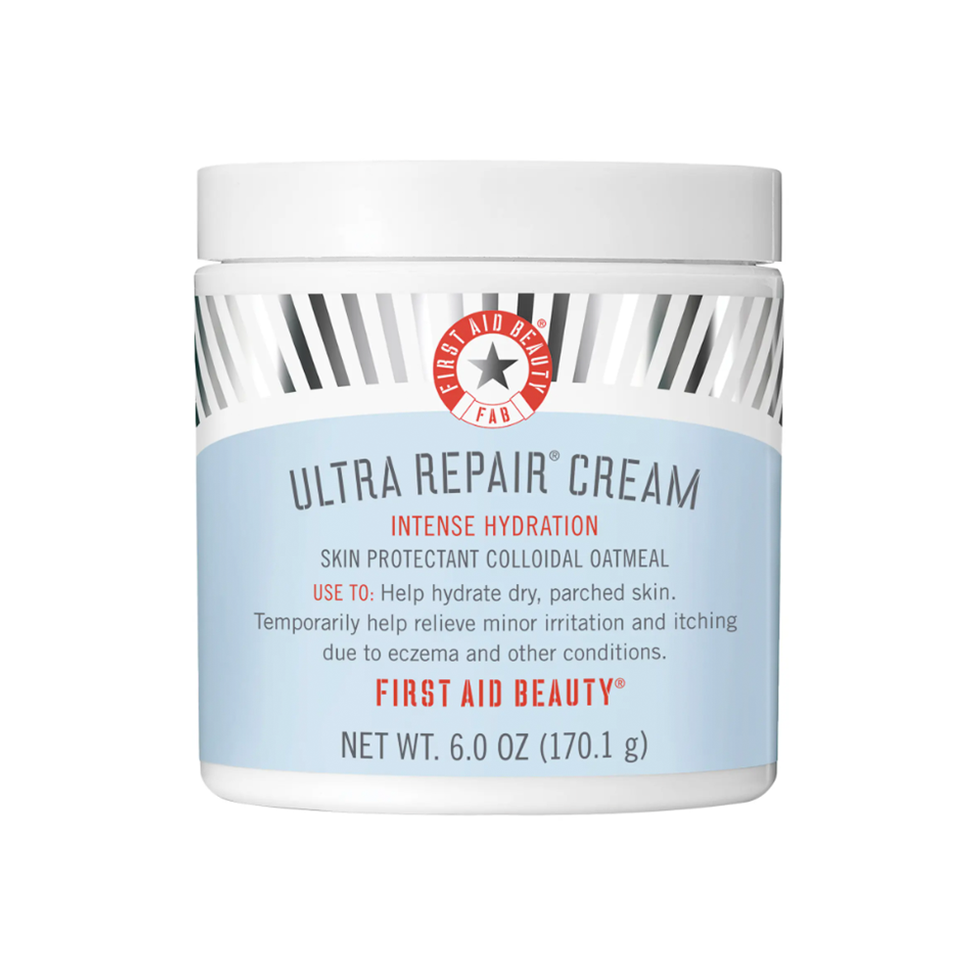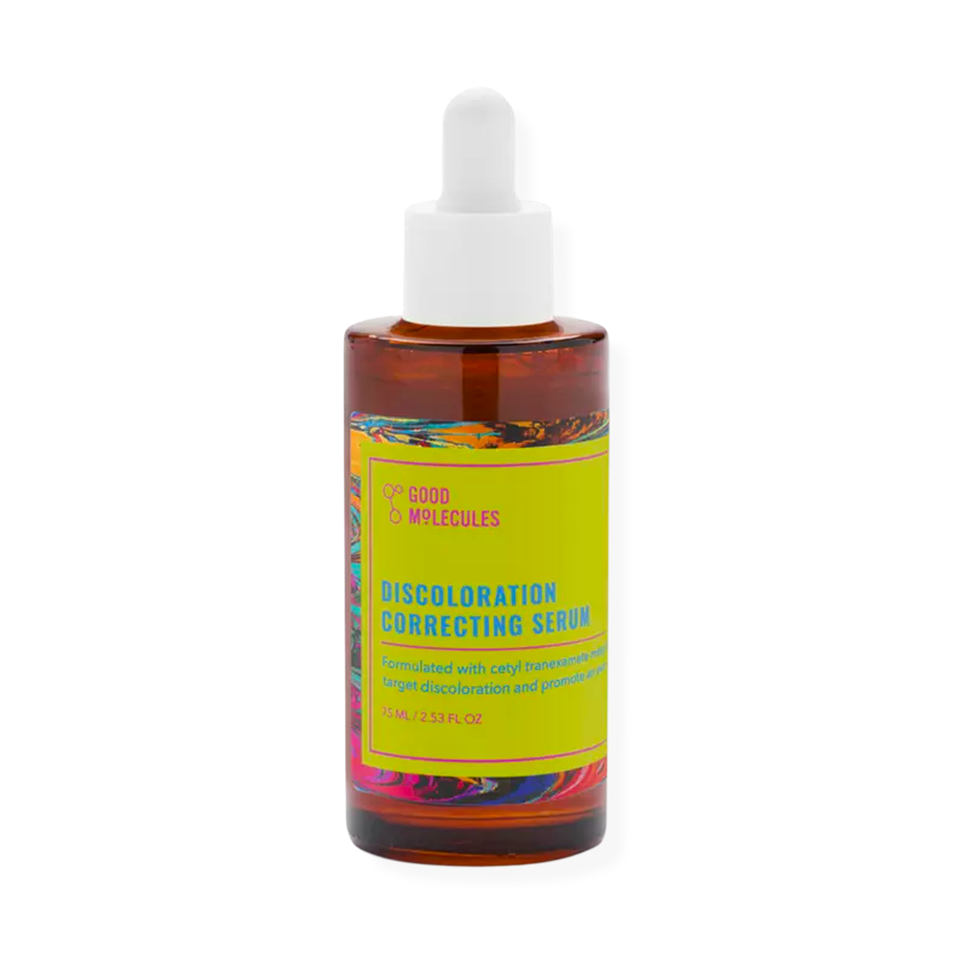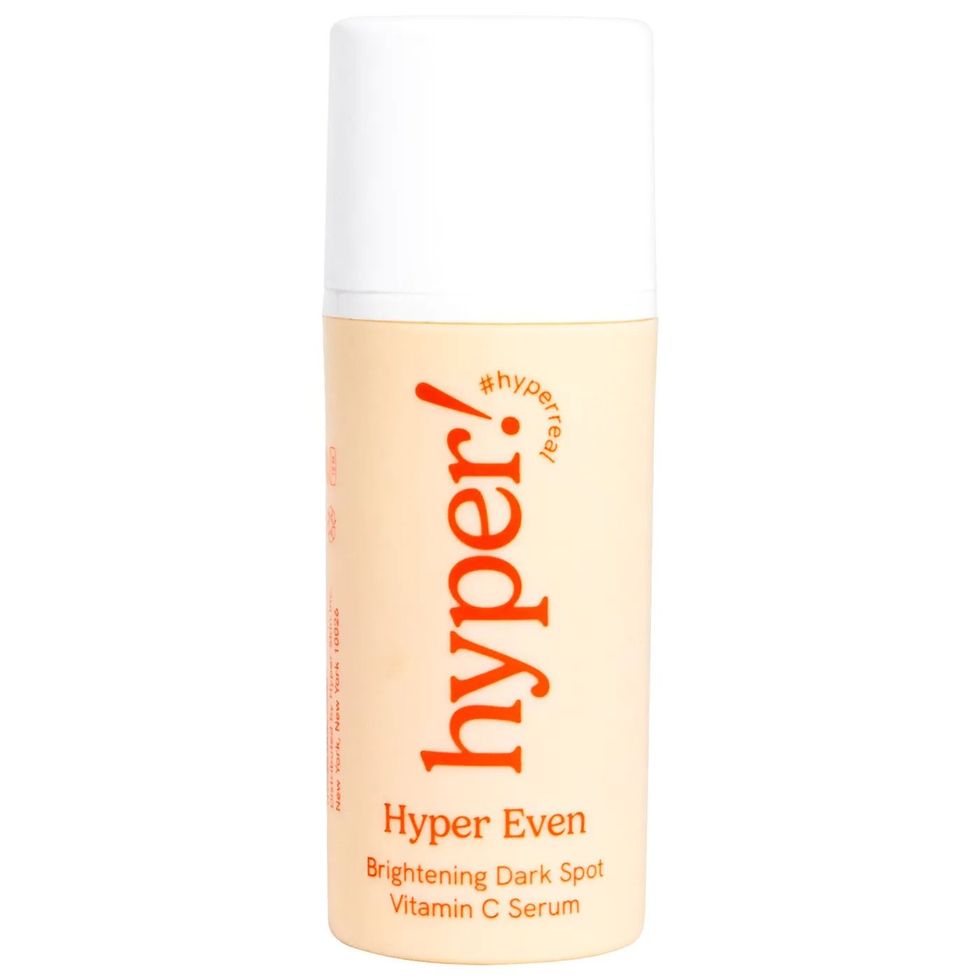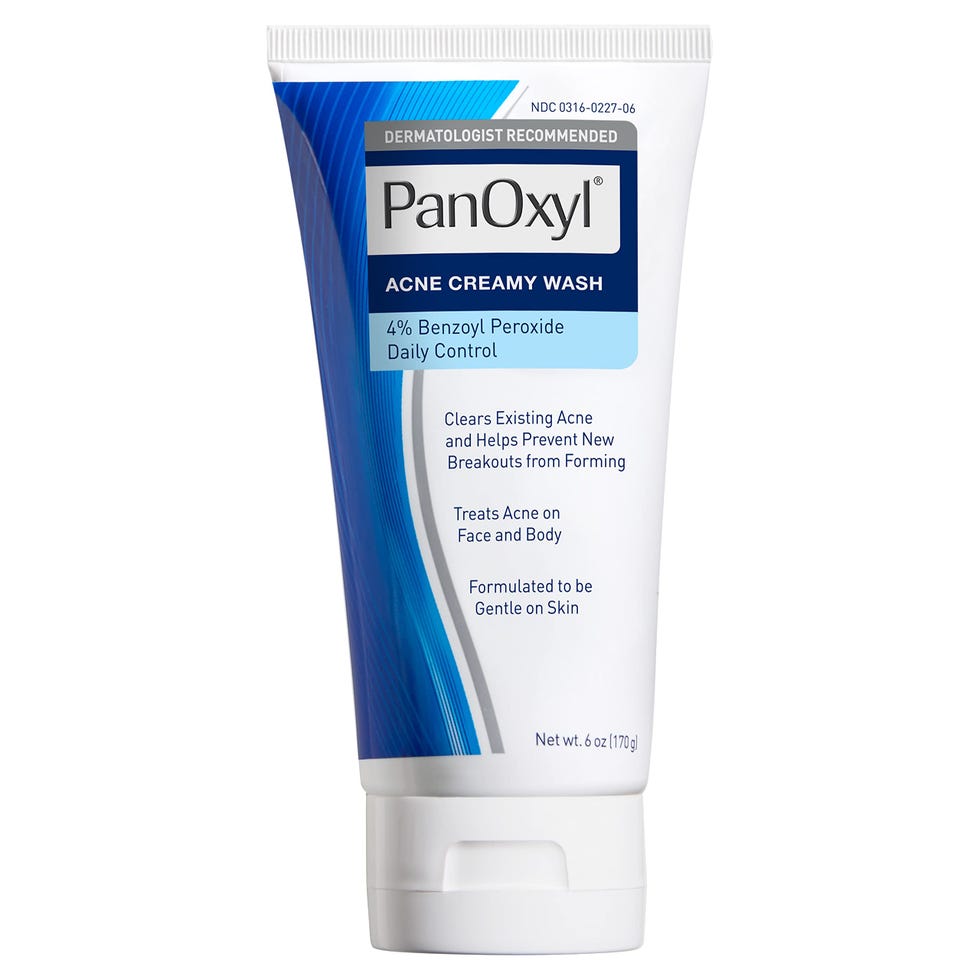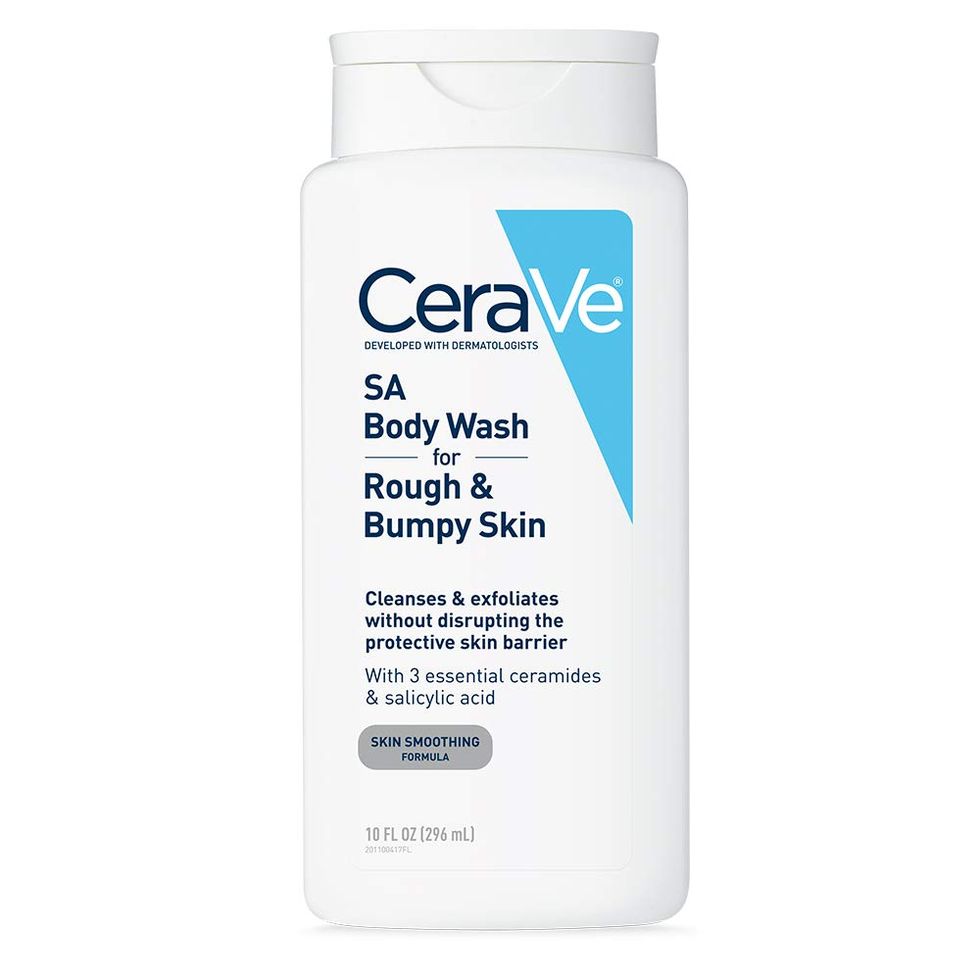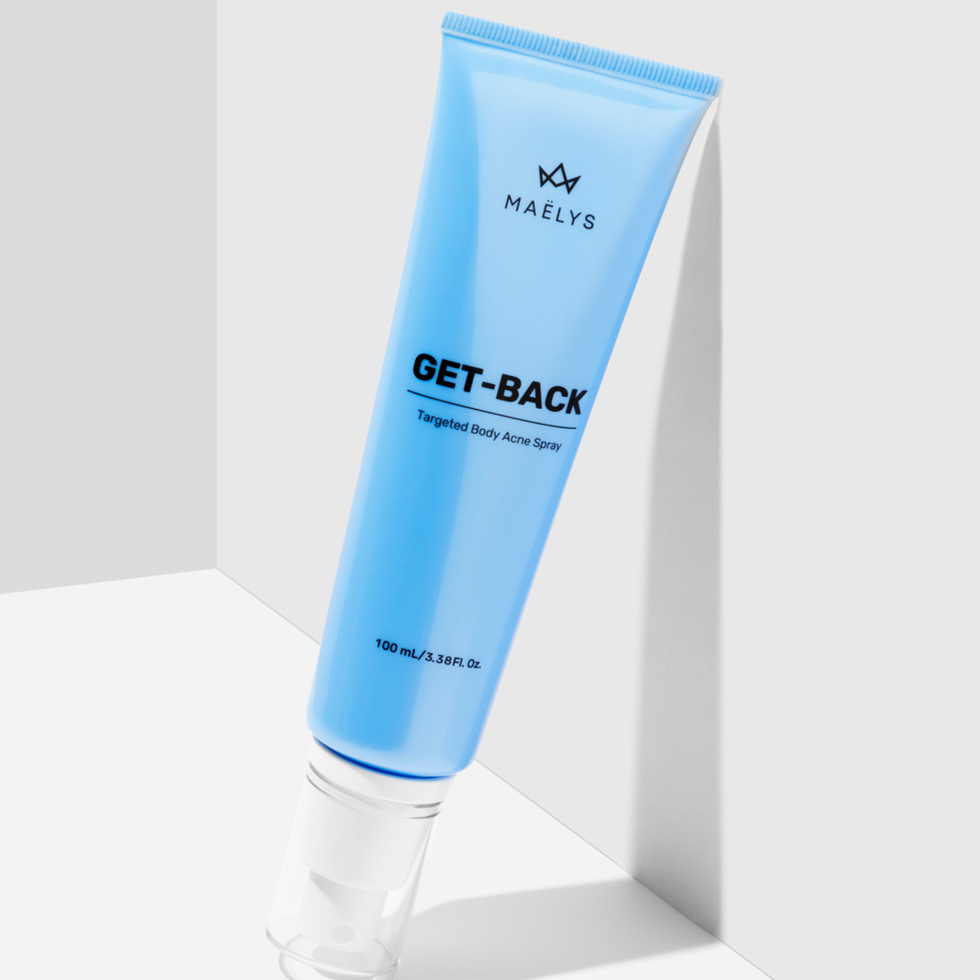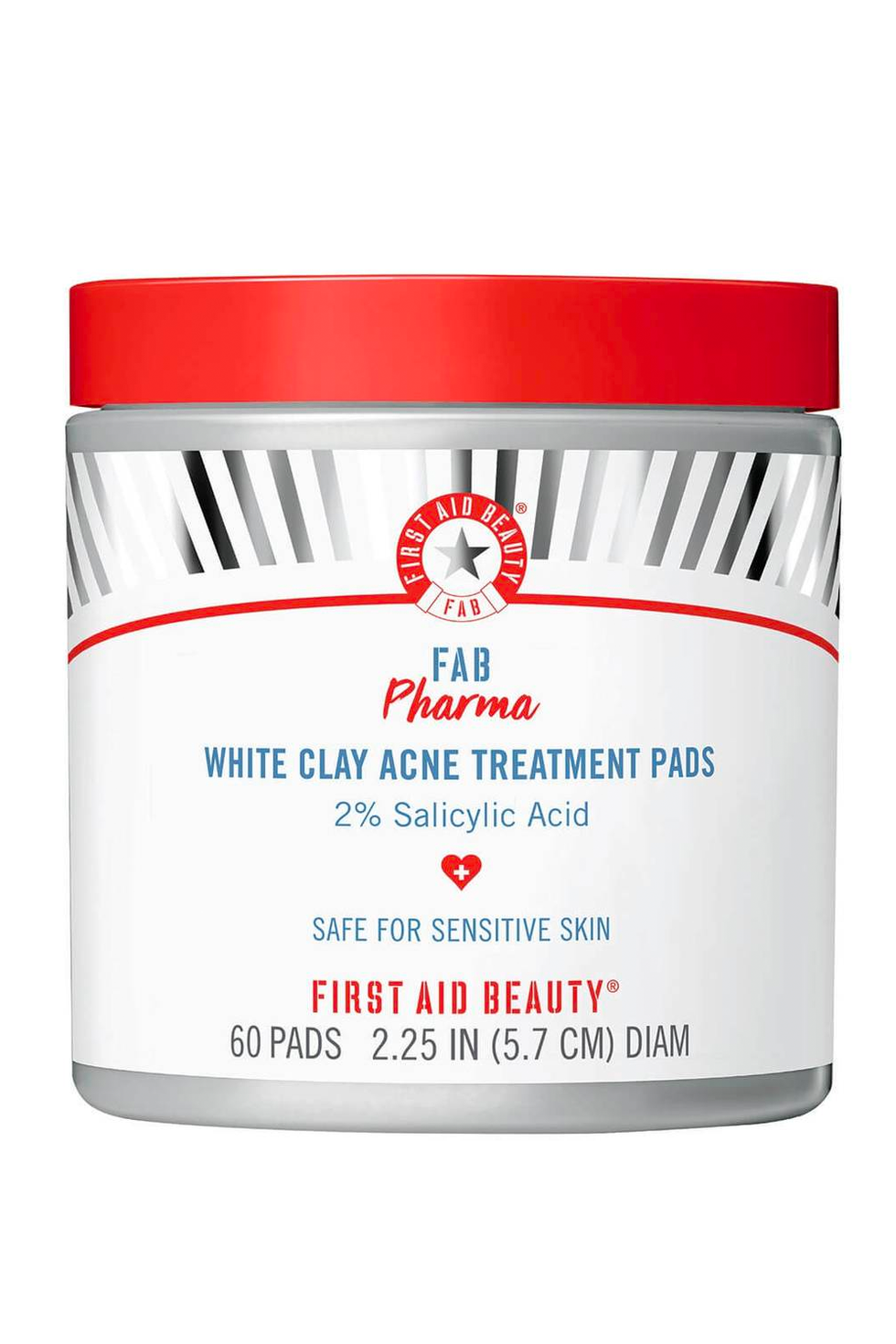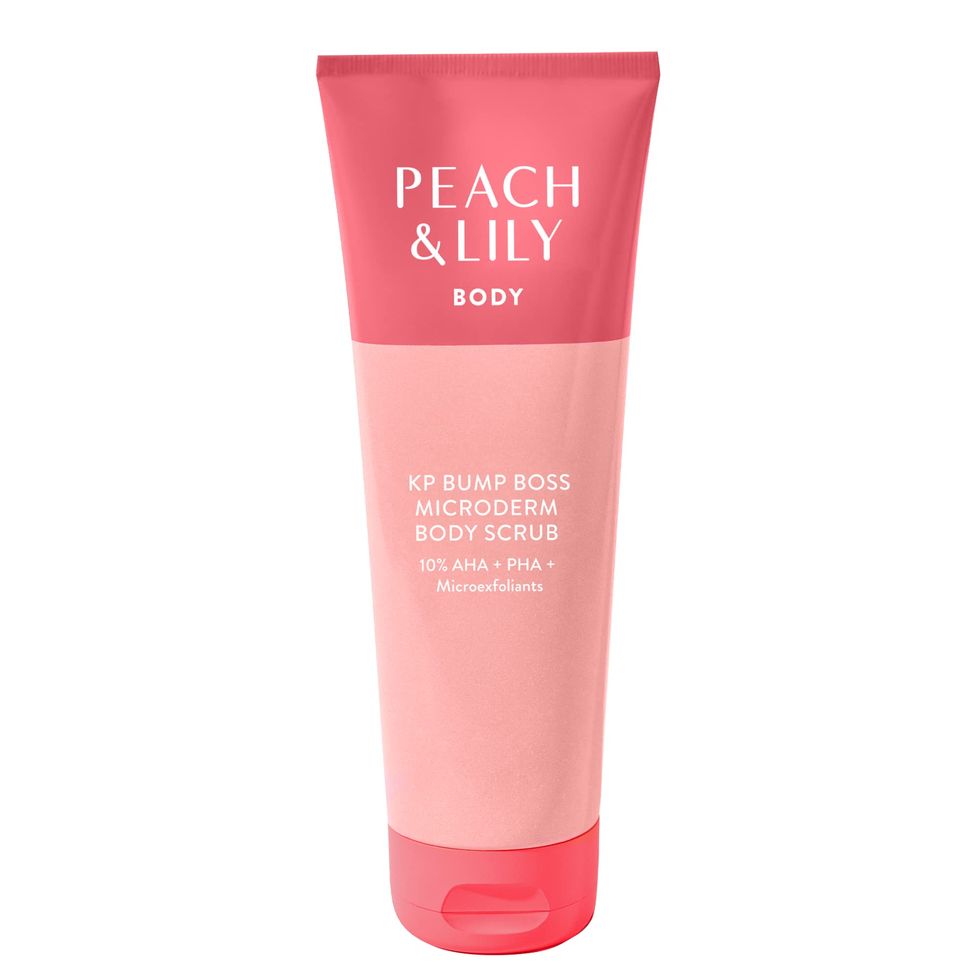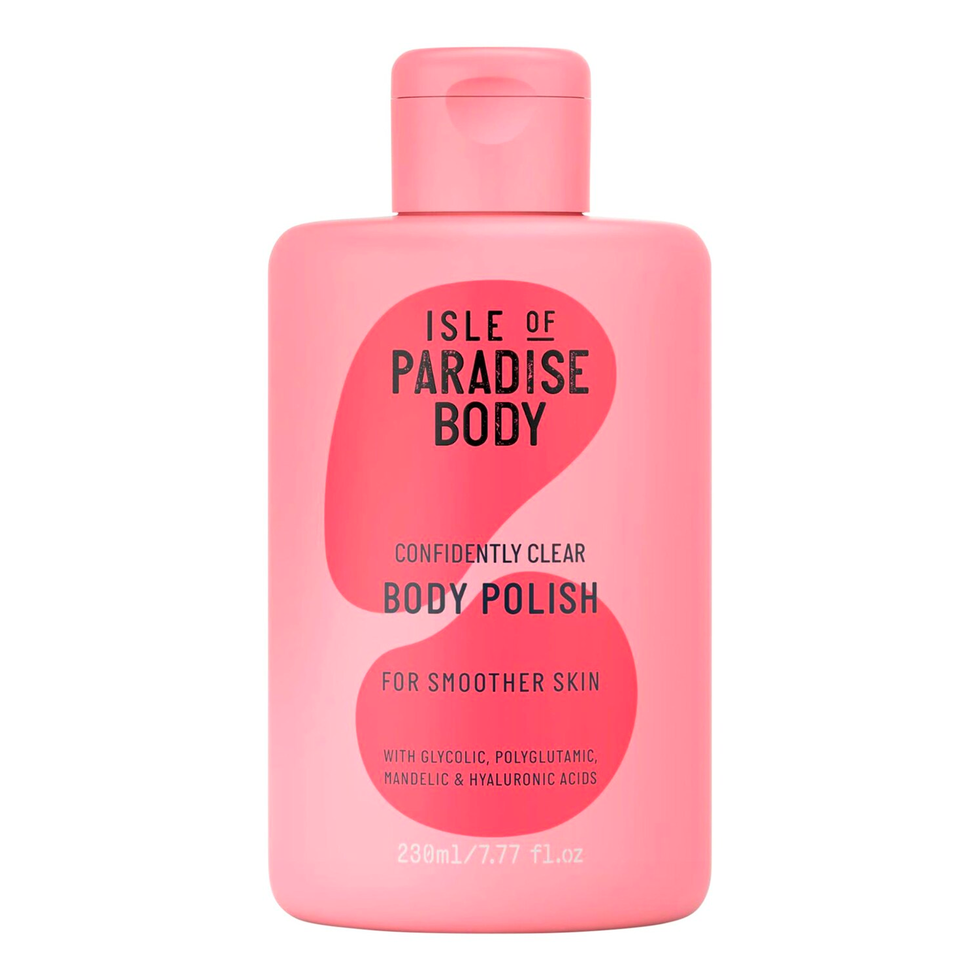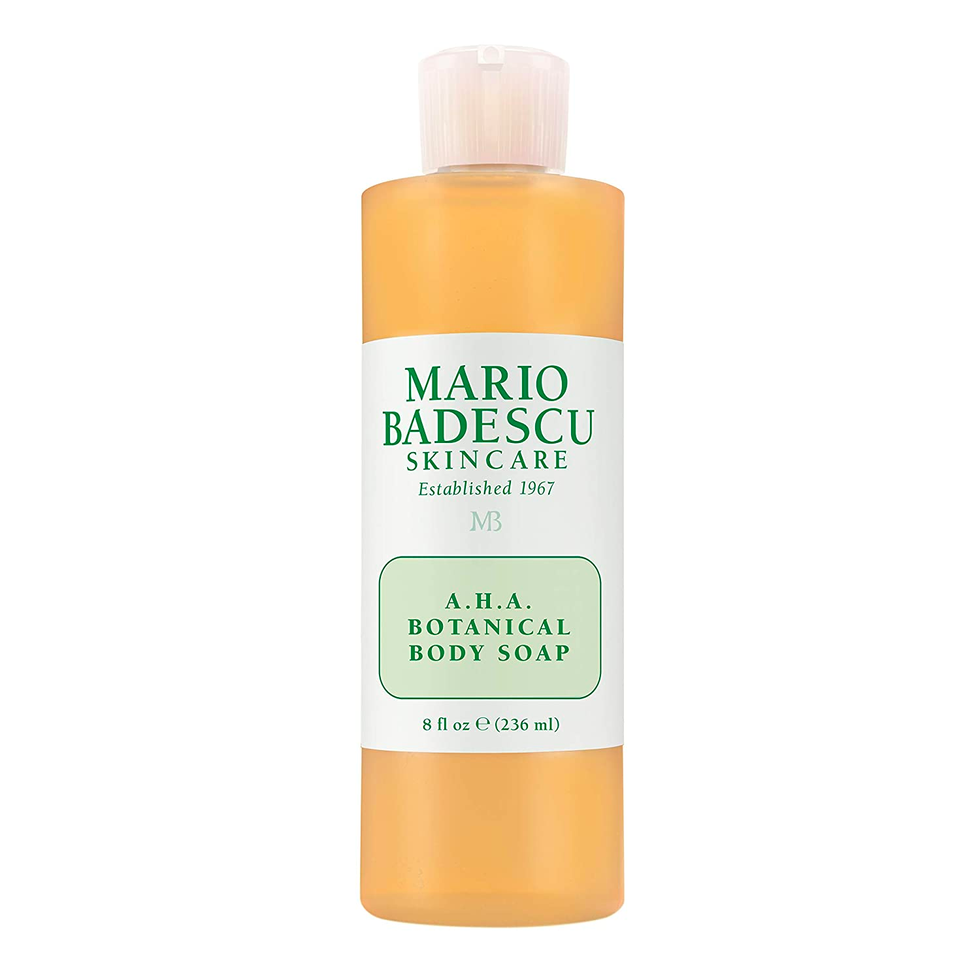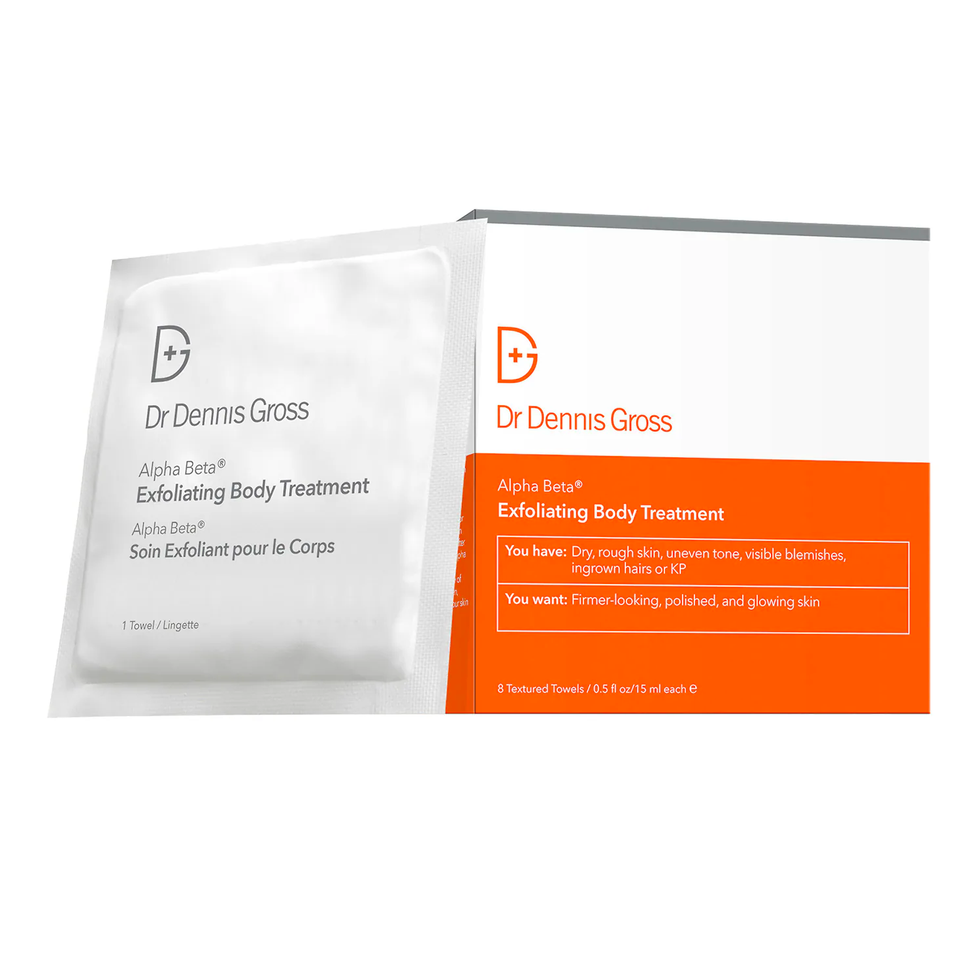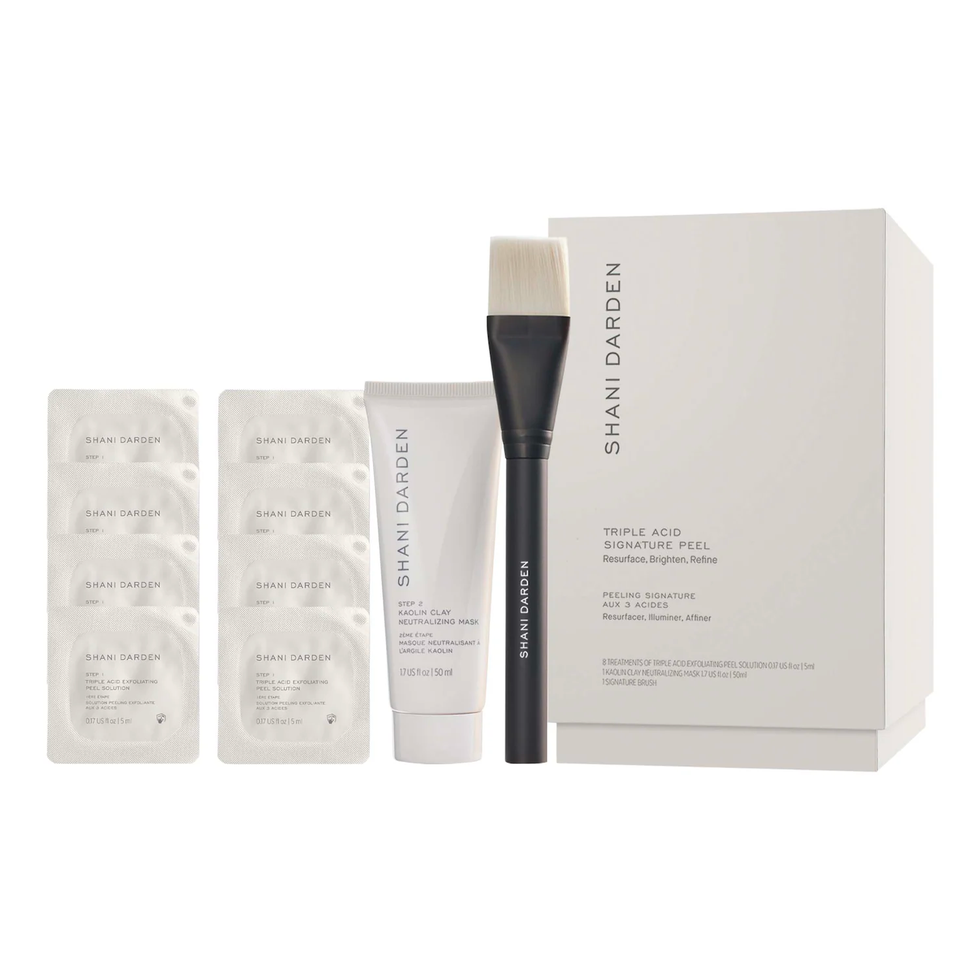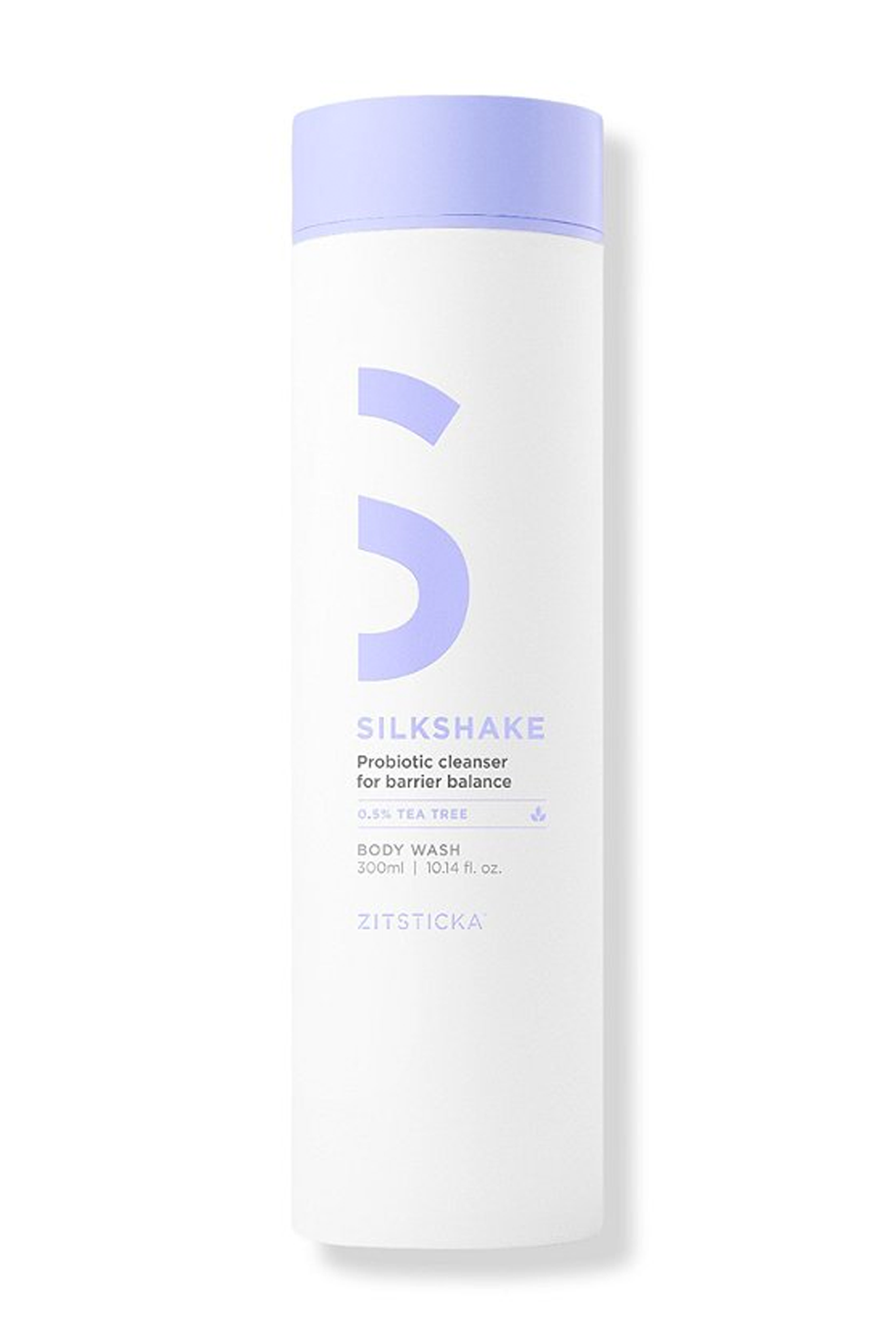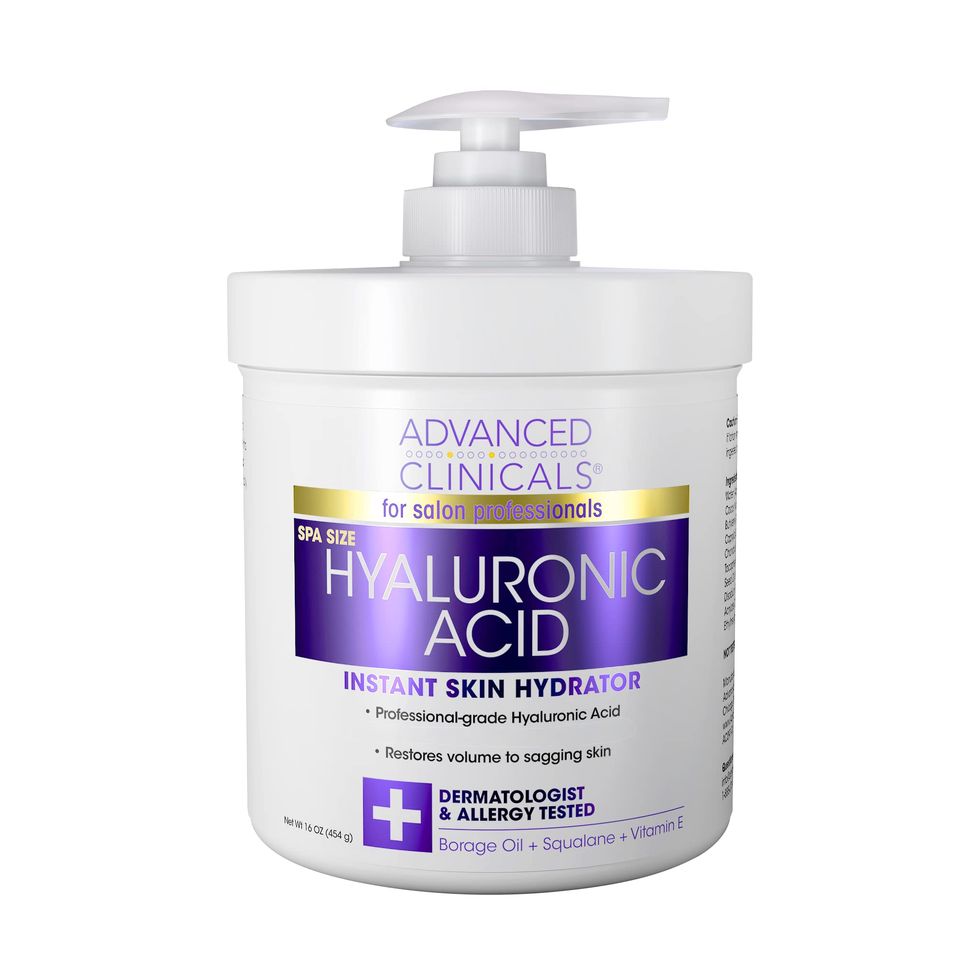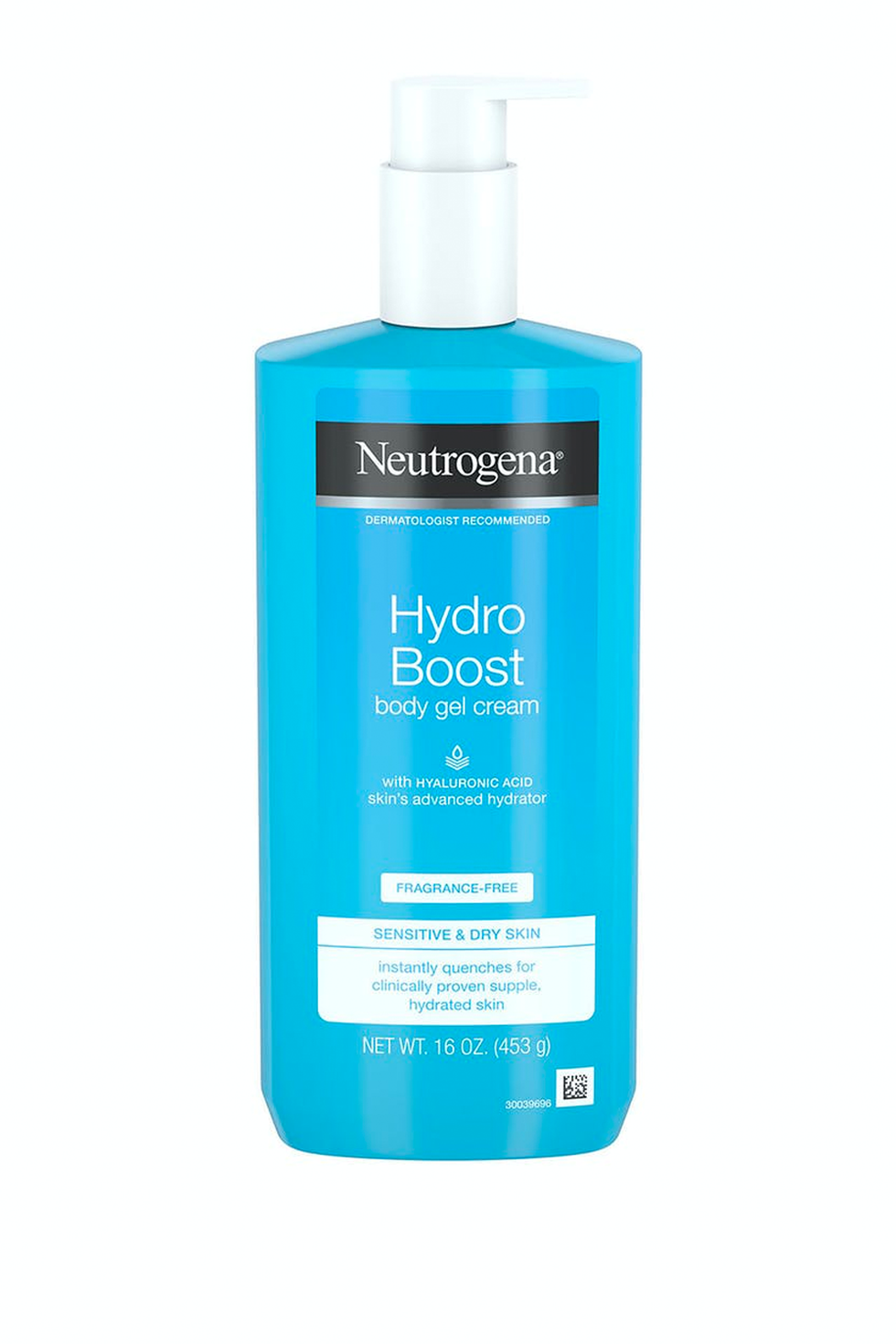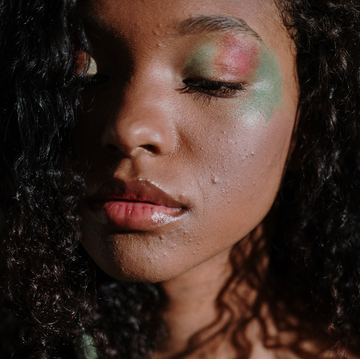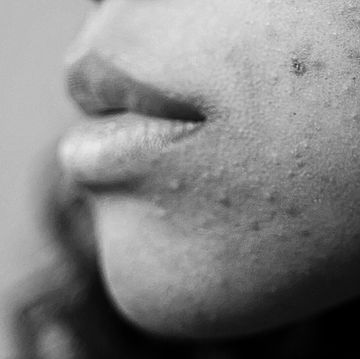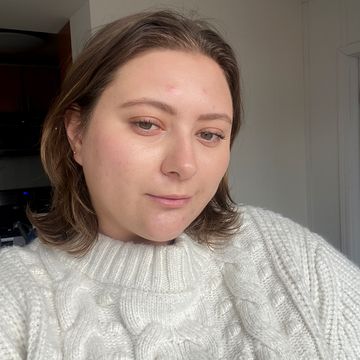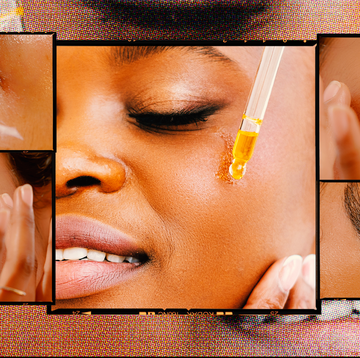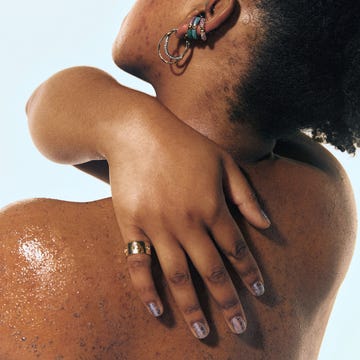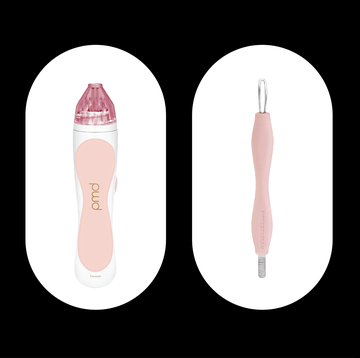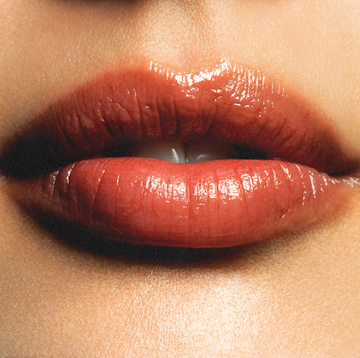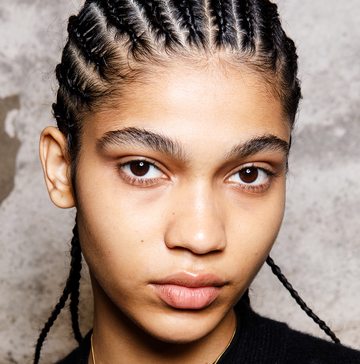Unfortunately for me (and my dermatologist on speed dial), my hormonal acne goes beyond just the acne on my cheeks and chin—I also have zits all over my body. And while my chest acne and back acne have been annoying, my butt acne has been the bane of my existence since puberty. We’re talking clogged pores, blackheads, and whiteheads that can get hella inflamed and leave behind major hyperpigmentation. Thankfully, after a decade of dealing with butt breakouts, I have a few tested and approved treatments for butt acne that actually work—and I’m now imparting that wisdom onto you.
Before you jump in, though, remember: Not all butt bumps are automatically butt acne. Instead, you may be dealing with folliculitis, hidradenitis suppurativa, or keratosis pilaris (all of which require a very different treatment approach, which I’ll get to later on). So to help you figure out what’s going on with your butt, I enlisted the help of six dermatologists for their top tips and products to treat and soothe breakouts, along with how to identify the bumps at home.
Why am I getting acne on my butt?
You’re getting acne on your butt because there is an overproduction of oil in your skin, just like with acne everywhere else on your body. Hormones, stress, and genetics can stimulate excess sebum production in your pores, says dermatologist Neda Mehr, MD. Once bacteria settles in and clogs your pore, it creates inflammation that leads to a pimple. And since you’re always sitting on your butt, it’s especially easy for these pores to clog, which is why butt bumps are so common on virtually every human, says dermatologist Morgan Rabach, MD.
“Common culprits for breakouts are irritation from clothes rubbing against the buttocks,” says dermatologist Tiffany Libby, MD, “like tight gym clothes that can trap in sweat, oil, and bacteria, along with friction or occlusion from sitting for prolonged periods.” Dr. Mehr also notes that butt bumps can also be caused by harsh skincare products, bacterial overgrowth, or allergic reactions (like an allergy to the nickel in a bikini trimmer, for example), since all three of these inflame the hair follicle or irritate the skin.
Just know that sometimes the bumps on your butt aren’t necessarily butt acne. Because your butt does encounter so much friction from clothing, sitting, walking, and exercising, along with sweat and bacteria, it’s also a ~breeding ground~ for all types of skin bumps, which brings us to…
Most common types of butt acne and butt bumps
Before you buy a bunch of strong exfoliants and benzoyl-peroxide washes that promise to cure your butt acne, you’ll need to first figure out what kind of bumps you’re working with. Here’s a very brief and basic breakdown of the most typical butt bumps. FYI, though: Only a dermatologist can truly diagnose what your bumps are, so make an appointment with yours or try a telemed service like Apostrophe or Curology.
Clogged pores
Clogged pores are basically the vague, all-inclusive term for the generic acne you’re most familiar with, like whiteheads and blackheads. And yes, it’s very possible to have the same type of zits on your butt that you have on your face. When oil, dirt, and dead skin cells get trapped in your skin, they clog your pores to create bumps/acne.
“Acne is defined by having comedones—i.e., clogged pores—and those comedones can be ‘open,’ aka blackheads, or ‘closed,’ aka whiteheads,” says Dr. Rabach. Basically, “true” but acne looks like...acne: a mix of whiteheads, maybe some blackheads, maybe a cystic pimple—you know the drill.
Folliculitis
Folliculitis occurs when your hair follicles get infected and inflamed, resulting in bumps. It’s also the most common cause of “butt acne” that both patients and doctors deal with. Folliculitis usually looks like a smattering of tiny bumps that are red or pink (usually on lighter skin tones), or purple or brown (on deeper skin tones), and they often have a tiny whitehead-looking tip. But unlike regular pus-filled zits, folliculitis bumps are the result of an irritated hair follicle getting blocked by inflammation, resulting in a mild infection within the follicle, says Dr. Libby.
Folliculitis and acne may look similar to the untrained eye, but there are a few key distinctions that a dermatologist can easily spot. Unlike a whitehead, which can trap a hair beneath the surface, “folliculitis has a hair in the center of an inflamed bump, and the white material associated with the bump is often dead skin and white blood cells,” says Dr. Rabach. Similarly, while whiteheads often appear as a single bump, folliculitis results in a cluster of same-size, whitehead-looking bumps.
Keratosis pilaris
Keratosis pilaris (KP) is a condition in which excess keratin builds up in your hair follicles, resulting in rough little red or brown bumps (depending on your skin tone) usually found on the backs of your arms, thighs, or butt. 40 percent of adults have KP, and it usually boils down to genetics. Though keratosis pilaris currently has no “cure,” there are professional and at-home treatments to help soften it:
- Chemical exfoliants, like glycolic and lactic acids, can help break down KP bumps over time. Gentle is better, so start with a lactic acid-based lotion every other night, and gently massage bumps with an acid-based scrub once a week.
- Pulsed Dye Laser (PDL) treatments can help reduce the red or brown blotchiness from KP by constricting the red vessels in the skin. Treatments can cost up to $500 per session, and you’ll need three to six treatments spaced a month apart.
- Laser hair removal can help destroy your hair follicle, which will prevent future hair from growing and/or getting trapped under your keratin (one current theory behind the cause of KP bumps). Prices and frequency vary, but they usually start at $300 a treatment, and you’ll need four to six monthly sessions.
Hidradenitis suppurativa
Hidradenitis suppurativa (HS), aka acne inversa, is a condition in which your sweat glands get infected and can create big, painful bumps (in mild cases), or large, blood- and pus-filled boils (in severe cases). HS usually occurs in areas of sweaty friction, like your butt, armpits, groin, and beneath the breasts, and they often look like giant blind pimples or cystic zits under the skin. Though HS is the least common of all the possible butt bumps on this list, it’s definitely one to know about, since it will require a trip to your dermatologist or doctor.
One way to know if you’re dealing with hidradenitis suppurativa is if your bump(s) seem larger and more painful than a classic small zit, and/or if the bump keeps coming back in the exact same spot, which is very common for HS. And even if you’re not sure, definitely make an appointment with a dermatologist ASAP who can identify HS and intervene before it progresses. Treatments can range from topical antibiotics and oral medications to steroid injections and injectable medications in severe cases.
How do you get rid of butt acne?
To get rid of acne on your butt, you’ll first need a proper diagnosis from a dermatologist, because can you only correctly treat your butt bumps once you know what you're working with. While more severe cases of butt bumps (re: hidradenitis suppurativa and hormonal acne) will need a doctor’s intervention, folliculitis, classic zits, and keratosis pilaris can all be managed through a mix of products and a few lifestyle changes. So once you've made that appointment to see your derm, get started on the below:
1. Avoid squeezing butt pimples
Squeezing or popping your butt pimple can make your zit more angry and irritated and potentially spread bacteria and infection to other parts of your skin, as well as lead to possible scarring and discoloration, says dermatologist Karen Chinonso Kagha, MD. Plus, trying to squeeze a cyst or boil isn’t possible (they have no connection to your skin’s surface, so they’re truly un-poppable) and can also lead to severe inflammation that could require a swift trip to urgent care for antibiotics, injections, or draining. Not great.
Instead, if you can, make an appointment with your dermatologist for a cortisone injection, which can majorly help reduce inflammation and help flatten the bump. Or, if the bump is small enough, you can always…
2. Try a spot treatment for butt acne
Instead of trying to pop or squeeze your butt acne or butt bump, cover it with a benzoyl-peroxide-based spot treatment, says Dr. Kagha. Benzoyl peroxide will help kill some of the acne-causing bacteria, which can help the zit heal faster and reduce some inflammation. If you’re allergic to benzoyl peroxide or have sensitive skin, you can also try a salicylic-acid spot treatment, which will gently exfoliate some of the dead skin in the area to help reduce pore clogging. Just dab it onto your clean zit before bed, then wipe off in the morning and smooth on a gentle, fragrance-free moisturizer for acne-prone skin.
3. Prevent zits, folliculitis, and KP with retinoids
Retinoids, an umbrella term for any type of vitamin-A derivative (including retinol, prescription-only tretinoin, and adapalene for acne), are your first line of defense against bumps—and that includes clogged pores, clogged hair follicles, and keratin plugs. “Retinoids speed up and regulate the shedding within your oil glands, kind of like a crossing guard that keeps things moving,” dermatologist Mona Gohara, MD, previously told Cosmo.
“Without it, the glands get lazy, they don’t shed, they get plugged, and the bacteria starts feeding on the plug to create a zit,” said Dr. Gohara. “But if you keep the shedding regulated, the bacteria doesn’t really have anything to feed off of.” To help prevent your butt bumps (and treat existing ones), start with a gentle retinol body lotion—especially if you have sensitive skin or KP—which combines retinoids with moisturizers to offset some of the potential irritating effects.
But if you’re dealing with butt pimples, you’ll likely need something a bit stronger than a retinol-spiked lotion. One of the best over-the-counter options? Adapalene gel (think: Differin or La-Roche Posay Effaclar), which is a prescription-strength retinoid specifically created for treating acne. Or, if you have persistent butt acne or cystic butt zits, you can get a prescription for tretinoin, which is the strongest (and the harshest) of retinoids. If you can’t see your dermatologist, try a telemed service, like Curology or Ro Derm, which will pair you with a doctor virtually.
Just remember: No matter which type of retinoid you try first, start slow. Smooth a pea-size amount over clean, dry skin one night a week for one week, two nights a week for two weeks, then three nights indefinitely. And always follow with a moisturizer immediately after, and slather on SPF 30 or higher sunscreen every morning.
4. Moisturize and soothe irritation to reduce butt acne inflammation
When your skin is angry and irritated, massage in an ultra-soothing moisturizer every night before bed to calm down your butt acne, folliculitis, KP, or HS. Look for a moisturizer filled with anti-inflammatory ingredients—like colloidal oatmeal, niacinamide, aloe vera, and allantoin—all of which help bring down some inflammation to eventually encourage your bumps to heal a bit quicker. And if you’re dealing with a particularly painful, large lump, dab on 1 percent hydrocortisone cream twice a day (once in the morning, once a night) for three days to reduce some swelling.
5. Fade hyperpigmentation with brighteners
Dr. Kagha recommends opting for “brightening ingredients like kojic acid, azelaic acid, or tranexamic acid, which help treat your dark spots by inhibiting excess melanin production in your skin.“ This not only helps fade discoloration you already have, but can help prevent acne scarring in the future too. Pat on a serum spiked with one of these brighteners two to three times a week, morning or night (but never at the same time as retinoids, or you’ll risk irritation).
6. Treat butt acne with benzoyl peroxide or salicylic acid body wash
If you’re dealing with true butt acne, try an acne body wash (or acne face wash, if you already have one) that’s formulated with benzoyl peroxide, which helps kill acne-causing bacteria, suggests both Dr. Libby and dermatologist Shereene Idriss, MD. Dr. Libby recommends massaging the body wash over your breakouts once or twice a week in the shower (note: benzoyl peroxide can bleach fabrics, so make sure to rinse it well).
If you don’t react well to benzoyl peroxide, whether due to an allergy or skin irritation, you can also try salicylic acid, which will work to break down clogged pores on your butt, whether that’s in a body wash, spot treatment, or skin mist. While BP is better at preventing and treating bacteria-based acne, salicylic acid has the benefit of also being able to smooth bumps and fade dark spots and acne scars when used in leave-on products, like a toner or moisturizer.
7. Smooth butt bumps with a chemical exfoliant
No, you can't slough your butt bumps away—and, in fact, trying to scrub at your folliculitis, acne, HS, or KP with a harsh physical scrub will only increase inflammation and aggravate your breakouts. Instead, says Dr. Mehr, gently massage your butt in the shower with an acid-based body wash, then swipe on a chemical exfoliant when your skin is dry, like an acid-based skin pad. Look for a formula with alpha-hydroxy acids (AHAs, such as lactic or glycolic acids) or beta-hydroxy acids (like salicylic acid) to help break down clogged pores.
8. Treat butt acne with prescription antibiotics
If you’ve tried everything (all the below body washes, scrubs, spot treatments, and lifestyle adjustments) for at least six consistent weeks and are still struggling with bumps, it’s past time to make an appointment with a dermatologist to talk about medications to calm inflammation and reduce bacteria that can lead to butt acne, folliculitis, and HS. Your dermatologist may start you off with topical antibiotics, like a lightweight clindamycin lotion or clindamycin and retinol-based serum, or they may suggest a short-term course of oral antibiotics, like broad-spectrum doxycycline or the new acne-specific antibiotic, Seysara.
9. Try hormonal acne treatments for butt bumps
If topical antibiotics or at-home products don’t help decrease your butt acne, your doctor may prescribe spironolactone or oral birth control, both of which help decrease and regulate your body’s production of androgens (i.e., “sex” hormones, like testosterone, that can make your skin overproduce oil).
Another super-effective treatment for persistent acne? Isotretinoin, aka Accutane, which permanently shrinks your oil glands. Though it’s definitely not as scary as you’ve been led to believe, it still requires regular blood testing and monitoring, so chat through any concerns or questions with your doctor, as always. You can also try Aviclear, a new acne-treatment laser that also works by shrinking your oil glands. It only requires three treatments spaced one month apart, but isn’t usually covered by insurance (and can cost about $3,000 for a full series).
10. Unclog pores with a chemical peel
If your butt acne is the result of clogged pores (see: you, consistently sweaty or with naturally oily skin), try an in-office chemical peel to encourage the shedding of dead skin, suggests Dr. Rabach. A chemical peel utilizes an acid-based solution (like glycolic, lactic, mandelic, and TCA) to remove the top layers of your skin, meaning it can also reduce hyperpigmentation, stimulate collagen production (when used in professional strengths), and smooth bumpy texture—even when you use it on your butt.
Chemical peels come in different strengths, with the strongest only being available in a dermatologist’s office or medspa, and can be done once every four to six weeks. But for a less intense treatment, you can also try an at-home chemical peel once every two weeks, which relies on lower strengths of the same chemical exfoliants to remove dead skin and smooth texture from butt acne.Important note: A high-strength chemical peel will only help true acne lesions—not keratosis pilaris, hidradenitis suppurativa, or folliculitis (it can actually make these conditions worse). So, as always, chat with your dermatologist first before risking it.
11. Wear light, dry fabrics to reduce irritation
Wearing non-breathable fabrics, like nylon and polyester, “form a cellophane-like barrier around your skin,” says Dr. Mehr, trapping sweat and bacteria against your butt. Not only does this barrier essentially push bacteria into your pores, notes Dr. Mehr, but the mix of sweat and friction can also lead to folliculitis-causing inflammation, acne-inducing clogged pores, and HS-aggravating chafing. When you absolutely have to wear tight-fitting workout clothes, opt for breathable cotton activewear to help prevent the sweat from getting trapped against your skin. Then, take them off as soon as you get home, and ideally give your body a quick rinse, which brings us to…
12. Take a quick shower after sweating
Sitting in sweaty clothes keeps dirt, oil, sweat, and grime against your skin, which can irritate butt bumps. As soon as you’re done working out (or just simply walking around in 90-degree+ heat), hop in the shower and suds up with a body wash. If you can’t get to a shower right away—long commute home, working out on your lunch break, drinks after your Barry’s class, whatever—wipe the skin on your butt with a fragrance-free body wipe, then mist it with a salicylic-acid spray before changing into your dry clothes.
13. Prevent folliculitis with laser hair removal
Because folliculitis is caused by inflammation of the hair follicle, it can often be treated and prevented through laser hair removal, which breaks down a little bit of your hair follicle with every treatment. “The key with folliculitis is to destroy the root of the hair follicle,” says Dr. Mehr, adding that folliculitis-causing bacteria often enters your body “from a pore, then tracks down a hair follicle.”
So when you slowly start destroying the hair follicle, the opening of the follicle tightens, making it harder for bacteria to get inside and cause inflammation. Of course, laser hair removal isn’t a full-stop solution for folliculitis (or hair removal, tbh), but it can still be an excellent tool in preventing bumps in the future.
14. Avoid using too many active ingredients
If your butt bumps are painful, itchy, and inflamed, you might feel inclined to try to scrub and burn it all away with too many chemical exfoliants and body peels, which will only exacerbate and inflame your issues. The key for treating butt acne—or any butt bump—is to start slow and be gentle, even when you really don’t want to.
Example: If you shower daily, don’t use an intense acne wash and a high-strength acne pad every single day. Instead, space out your active ingredients and use just one per day. Skip the exfoliating pad on the days you use a benzoyl peroxide or salicylic acid wash, then opt for a gentle cleanser with moisturizing hyaluronic acid, glycerin, and panthenol to hold in moisture on your off days. And make sure that you always follow with a lightweight, oil-free moisturizer, especially on days where you're using high-strength chemicals.
If you have overdone it and you're now dealing with itchy, inflamed skin—or one of your zits is especially painful and throbbing—dab on 1 percent hydrocortisone cream twice a day for up to five days to help decrease redness and inflammation. If you're finding you still need steroid cream after a week, make an appointment with your dermatologist for a targeted product approach.
15. Change up your laundry products
Folliculitis and keratosis pilaris can be easily irritated by harsh chemicals, scrubs, and even innocent-seeming formulas, like fragrance, essential oils, and dyes. Surprisingly, laundry detergents, fabric softeners, and dryer sheets can all leave an irritating residue on your skin that can aggravate butt acne or bumps, especially in those with sensitive skin.
Switch to hypoallergenic laundry products that don’t contain any fragrance (see: “free and clear” on the label), and run your sheets and clothes through the wash with the new detergent. If your skin is still blotchy and irritated after two washes, you can rule out your detergent as the culprit.
Final thoughts:
Butt bumps can truly be everything from legit clogged pores to keratosis pilaris to folliculitis to HS. So if you’ve tried salicylic-acid spot treatments and benzoyl-peroxide washes to no avail, make an appointment with your dermatologist to get a proper diagnosis and treatment plan. And if you feel weird about going to your dermatologist specifically for your butt acne, don’t worry—it’s so common, and everyone (hi, me!) experiences it at some point, so no need to be embarrassed giving your doctor all the details. And hey, whatever I need to do for a few extra “🍑🍑🍑” comments in my next IG bikini pic, I’ll do it.
Meet the experts:
- Karen Chinonso Kagha, MD, is a board-certified dermatologist at the Skin Care and Laser Physicians of Beverly Hills in Los Angeles, CA. She’s an expert in cosmetic and medical dermatology after training as a fellow at the Harvard Medical School and is passionate about treating all skin types and tones.
- Neda Mehr, MD, is a board-certified dermatologist and medical director at Pure Dermatology Cosmetic & Hair Center in Newport Beach, CA. Dr. Mehr is also a Mohs surgeon, media expert, and the founder of DermBx skincare products.
- Shereene Idriss, MD, is a board-certified dermatologist and clinical instructor in dermatology at the Icahn School of Medicine at Mount Sinai. Dr. Idriss is also the founder and medical director of Idriss Dermatology in New York, NY.
- Tiffany Libby, MD, is a board-certified dermatologist and Mohs surgeon in Providence, RI. She is also an assistant professor of dermatology at The Warren Alpert Medical School of Brown University.
- Morgan Rabach, MD, is a board-certified dermatologist and cofounder of LM Medical NYC in New York, NY. Dr. Rabach is also a clinical assistant professor of dermatology at the Icahn School of Medicine at Mount Sinai.
- Mona Gohara, MD, is an associate clinical professor of dermatologist at Yale School of Medicine, and a board-certified dermatologist at the Dermatology Physicians of Connecticut in multiple locations in CT. Dr. Gohara has also spoken to Cosmo about cystic acne.
Why trust Cosmopolitan?
Beth Gillette is the beauty editor at Cosmopolitan with more than five years of experience researching, writing, and editing acne stories that range from ingrown-hair treatments to scalp-acne shampoo. She’s an authority in all skincare categories but is an expert when it comes to body acne, thanks to dealing with back, chest, and butt acne for more than a decade. She regularly tests and analyzes skincare products for efficacy, while working with the industry’s top dermatologists to assess new formulas and brands.
Brooke Shunatona was the senior beauty editor at Cosmopolitan for nearly five years and has eight years of experience writing about beauty and lifestyle across print and digital, including what to do when you get a pimple in your nose and how to get rid of oily skin.
Beth Gillette is the beauty editor at Cosmopolitan, where she covers skincare, makeup, hair, nails, and more across digital and print. She can generally be found in bright eyeshadow furiously typing her latest feature or hemming and hawing about a new product you "have to try." Prior to Cosmopolitan, she wrote and edited beauty content as an Editor at The Everygirl for four years. Follow her on Instagram for makeup selfies and a new hair 'do every few months.

Brooke Shunatona is a contributing writer for Cosmopolitan.com.
